Abstract
1 In cats, anaesthetized with pentobarbitone, intravenous diazepam (minimum dose 3.0 mg/kg) enhanced dorsal root potentials but did not significantly diminish the reduction by electrophoretic strychnine of the inhibitory action of electrophoretic glycine on dorsal horn interneurones. 2 In mice, intraperitoneal diazepam (2.5 mg/kg) had no appreciable effect on the potency of strychnine as a convulsant, although providing some protection against bicuculline. 3 These observations, together with the failure of chlordiazepoxide to either inhibit the firing of spinal interneurones or reduce antagonism between strychnine and glycine when administered locally, provide no support for the interaction between benzodiazepines and mammalian central glycine receptors which has been proposed on the basis of in vitro studies of strychnine binding.
Full text
PDF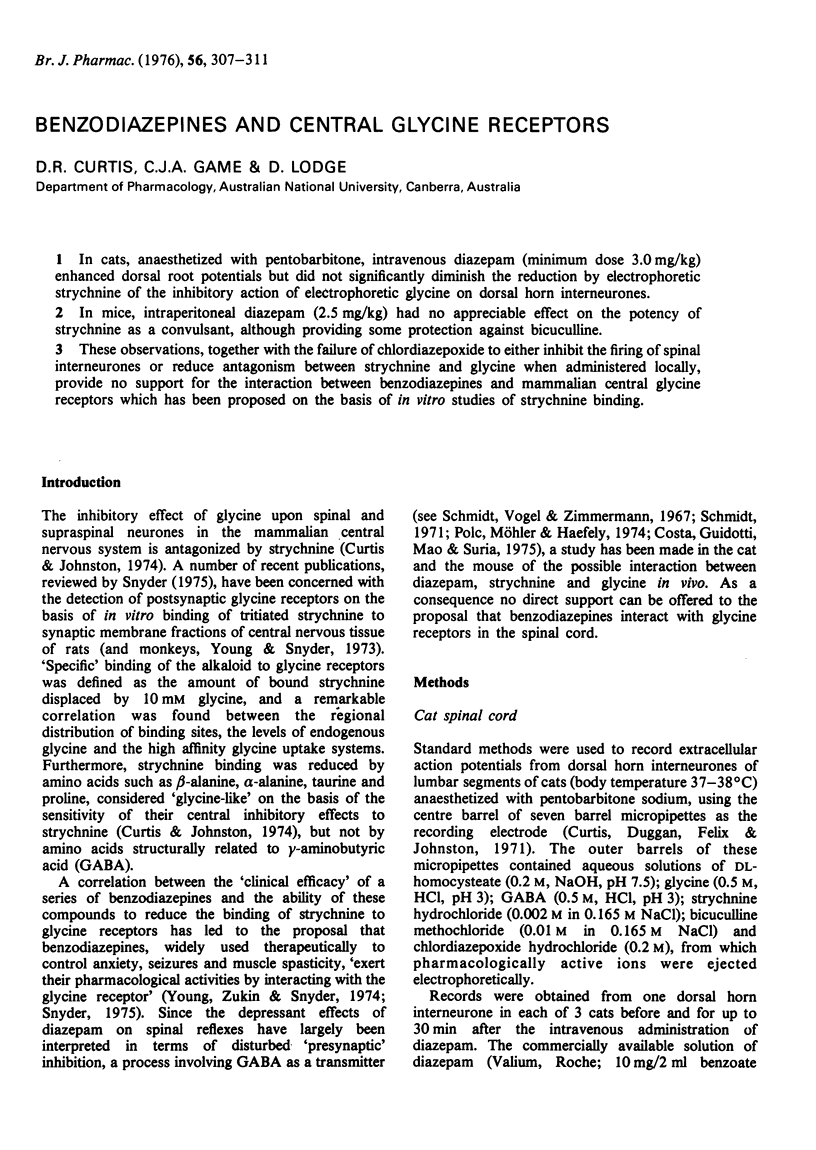
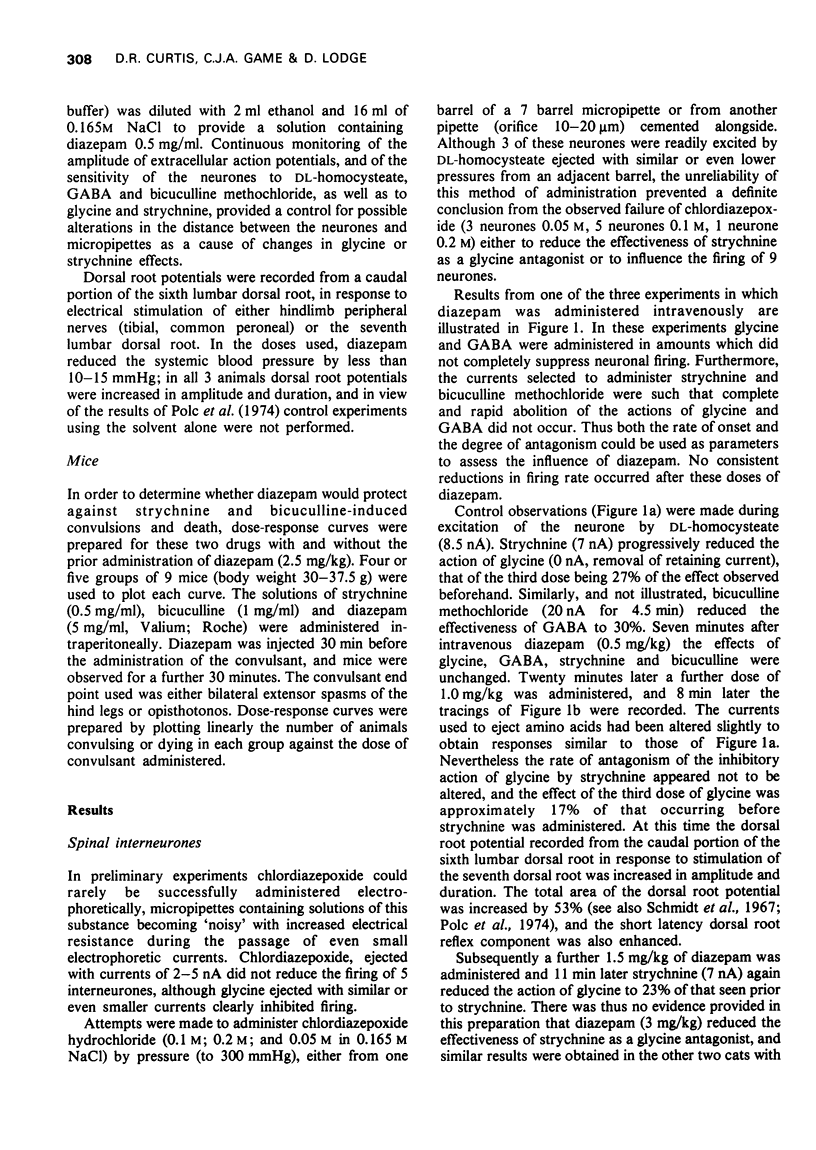
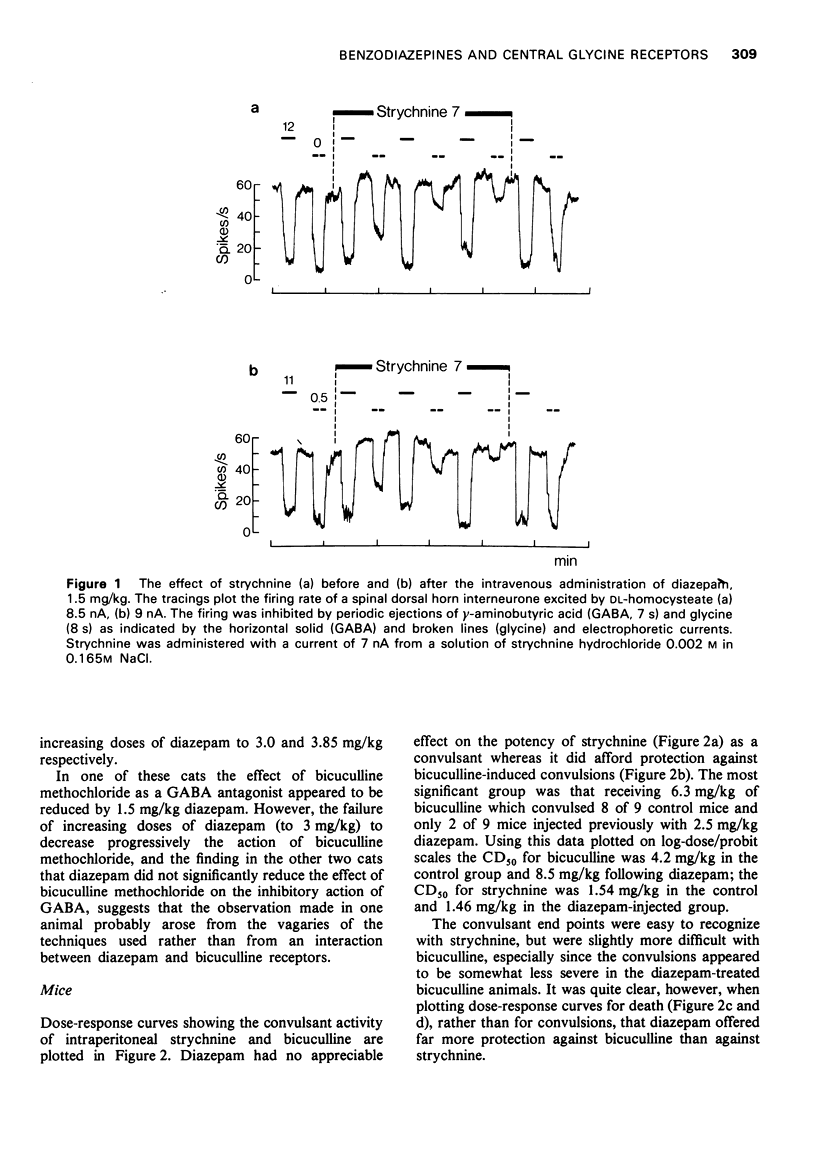
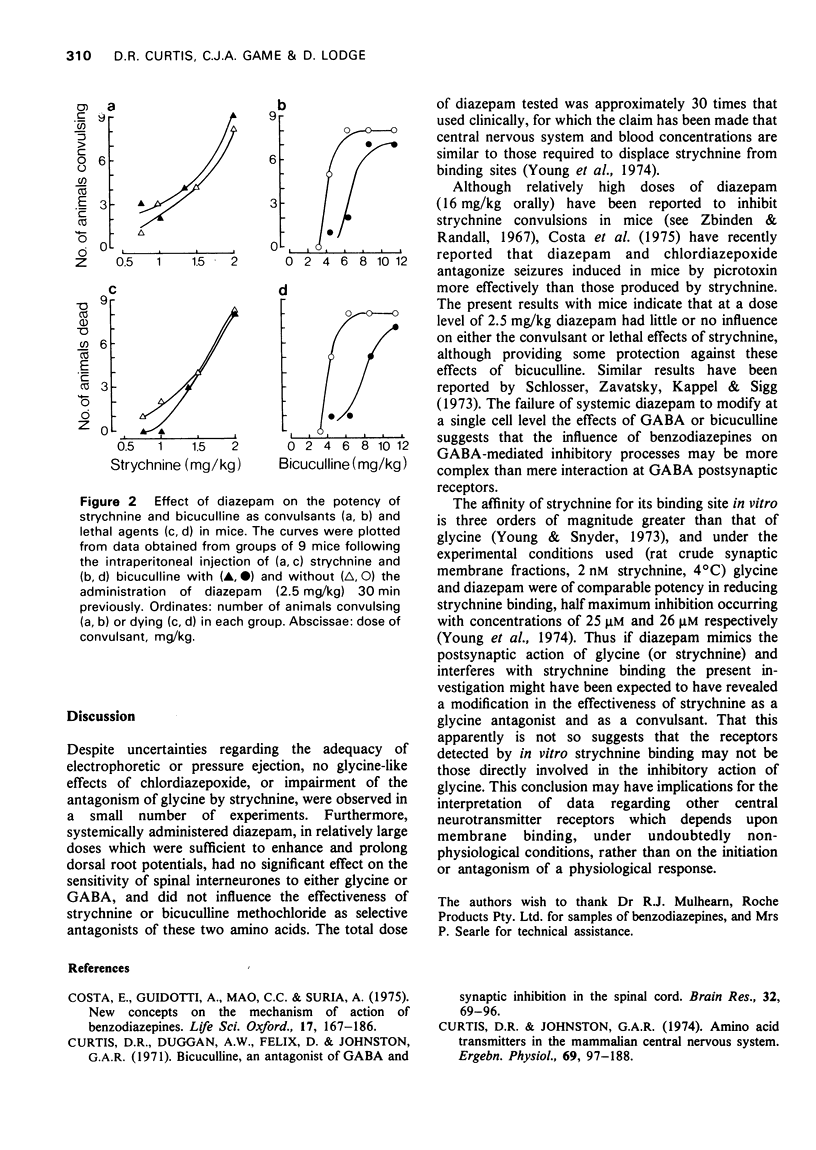
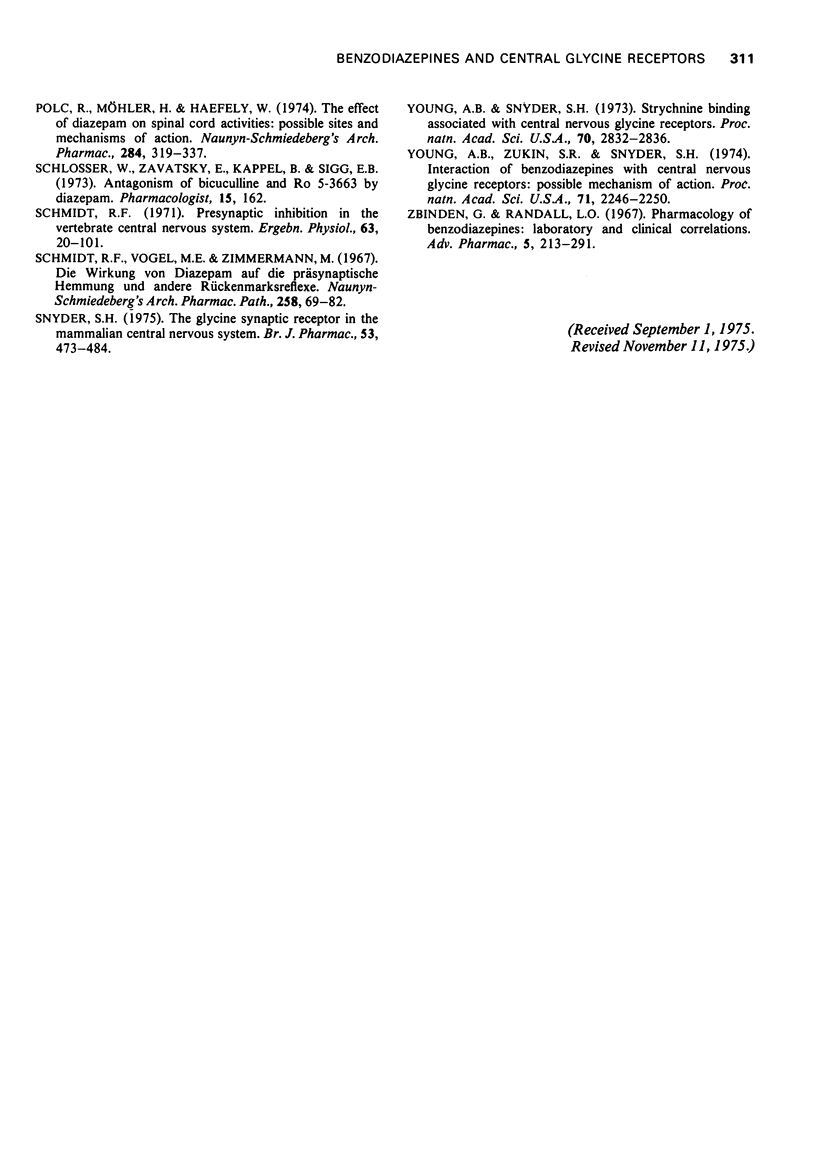
Selected References
These references are in PubMed. This may not be the complete list of references from this article.
- Costa E., Guidotti A., Mao C. C., Suria A. New concepts on the mechanism of action of benzodiazepines. Life Sci. 1975 Jul 15;17(2):167–185. doi: 10.1016/0024-3205(75)90501-9. [DOI] [PubMed] [Google Scholar]
- Curtis D. R., Duggan A. W., Felix D., Johnston G. A. Bicuculline, an antagonist of GABA and synaptic inhibition in the spinal cord of the cat. Brain Res. 1971 Sep 10;32(1):69–96. doi: 10.1016/0006-8993(71)90156-9. [DOI] [PubMed] [Google Scholar]
- Curtis D. R., Johnston G. A. Amino acid transmitters in the mammalian central nervous system. Ergeb Physiol. 1974;69(0):97–188. doi: 10.1007/3-540-06498-2_3. [DOI] [PubMed] [Google Scholar]
- Polc P., Möhler H., Haefely W. The effect of diazepam on spinal cord activities: possible sites and mechanisms of action. Naunyn Schmiedebergs Arch Pharmacol. 1974;284(4):319–337. doi: 10.1007/BF00504702. [DOI] [PubMed] [Google Scholar]
- Schmidt R. F. Presynaptic inhibition in the vertebrate central nervous system. Ergeb Physiol. 1971;63:20–101. doi: 10.1007/BFb0047741. [DOI] [PubMed] [Google Scholar]
- Schmidt R. F., Vogel M. E., Zimmermann M. Die Wirkung von Diazepam auf die präsynaptische Hemmung und andere Rückenmarksreflexe. Naunyn Schmiedebergs Arch Exp Pathol Pharmakol. 1967;258(1):69–82. [PubMed] [Google Scholar]
- Snyder S. H. Fifth Gaddum Memorial Lecture, University of Bristol, September 1974, The glycine synaptic receptor in the mammalian central nervous system. Br J Pharmacol. 1975 Apr;53(4):473–484. doi: 10.1111/j.1476-5381.1975.tb07383.x. [DOI] [PMC free article] [PubMed] [Google Scholar]
- Young A. B., Snyder S. H. Strychnine binding associated with glycine receptors of the central nervous system. Proc Natl Acad Sci U S A. 1973 Oct;70(10):2832–2836. doi: 10.1073/pnas.70.10.2832. [DOI] [PMC free article] [PubMed] [Google Scholar]
- Young A. B., Zukin S. R., Snyder S. H. Interaction of benzodiazepines with central nervous glycine receptors: possible mechanism of action. Proc Natl Acad Sci U S A. 1974 Jun;71(6):2246–2250. doi: 10.1073/pnas.71.6.2246. [DOI] [PMC free article] [PubMed] [Google Scholar]
- Zbinden G., Randall L. O. Pharmacology of benzodiazepines: laboratory and clinical correlations. Adv Pharmacol. 1967;5:213–291. doi: 10.1016/s1054-3589(08)60658-4. [DOI] [PubMed] [Google Scholar]


